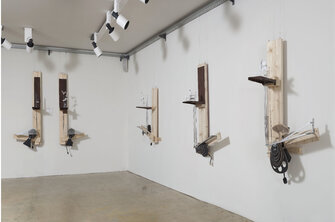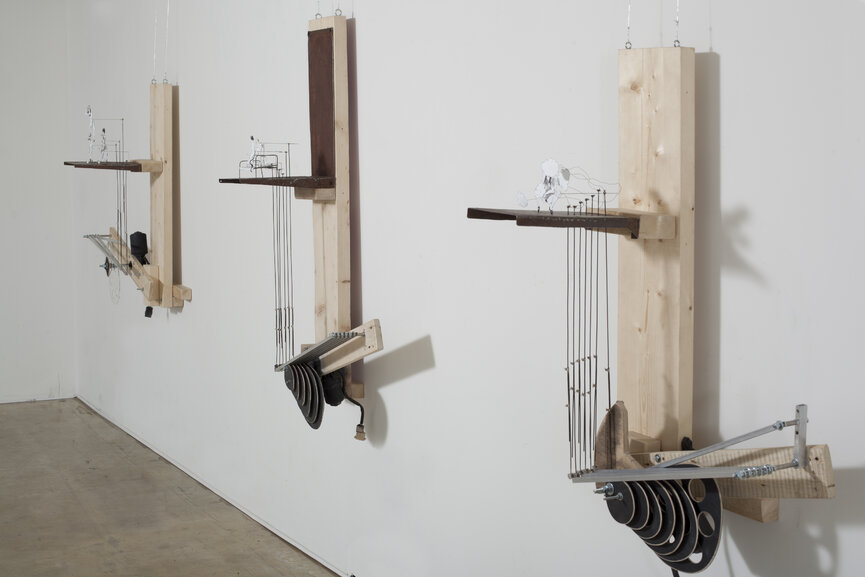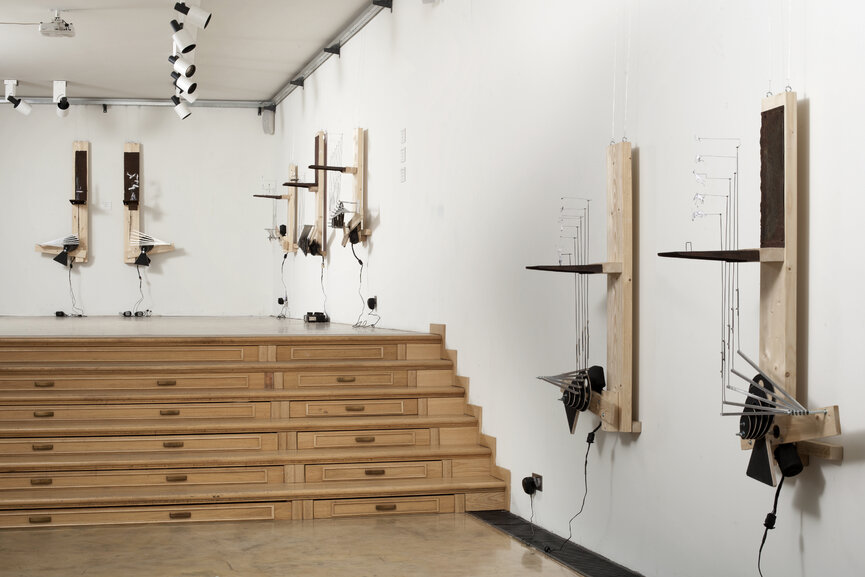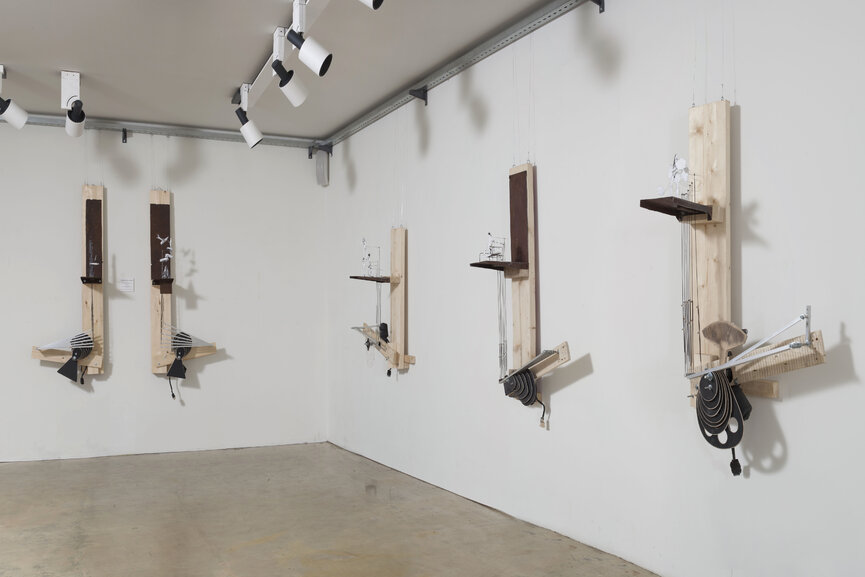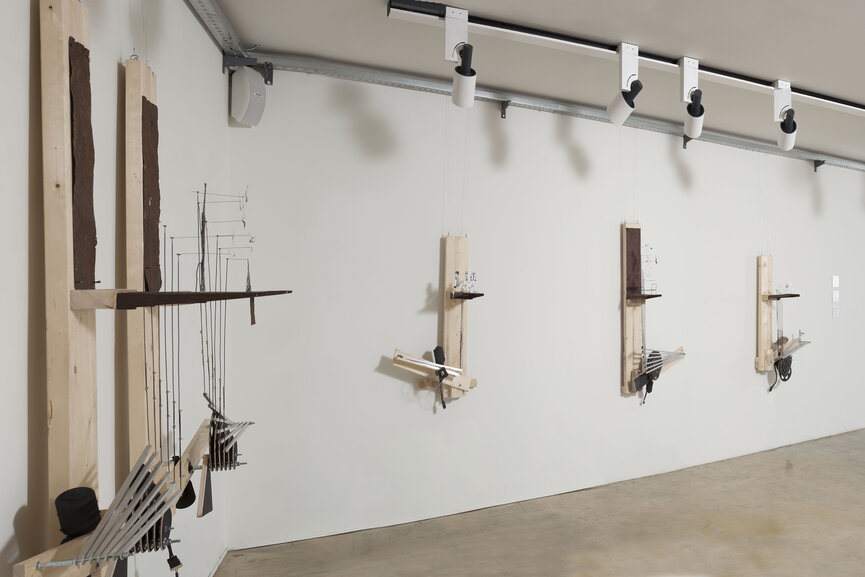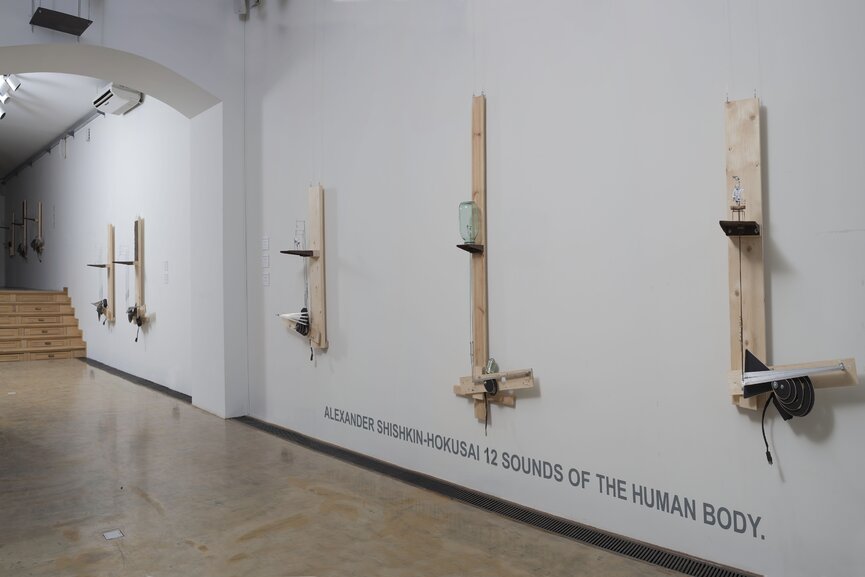It’s not for nothing that theatrical artist and set designer Alexander Shishkin took on the pseudonym “Hokusai” for his projects in contemporary art galleries. The mask of Japanese classicism does not match Shishkin’s creative physiognomy in even the slightest way, which frees him from expectations that have accumulated due to his main work. His pseudonym, obtained by appropriation, starts with the letter H (“X” in Russian), which is also significant; Shishkin’s fellow-native, Daniil Yuvachev, also made up a new name for himself – Harms – starting with the same letter. His kinship with Harms, the founder of the Union of Real Art (OBERIU) is evident in Shishkin-Hokusai’s inherent sense of the absurd. At times, his constructions resemble illustrations to Harms’ prose: everything is running, flying and jumping. As in Harms’ case, choosing a new name changes the author’s ethnic affiliation, letting him peer at his chosen playground – contemporary art – as if from behind a fence or through a lorgnette, like a visiting foreigner.
This is not to say that the artist’s methods are completely alien in current art developments. Shishkin-Hokusai has at least one predecessor who cultivates the theme of the theater of the absurd using this type of mechanism – the South African William Kentridge, who started his journey as a professional artist by working in television. However, Shishkin-Hokusai’s constructions lack a political subtext. Kentridge muses on broad themes – equality and totalitarianism. The Petersburg artist, on the other hand, submerges the viewer in a magical realism entangled in folklore and anecdote. In this sense he carries on the line of World of Art artists Nikolai Sapunov and Stepan Sudeikin, who take regular excursions into symbolic Folk territory. The simple mechanism of Shishkin-Hokusai’s installations seems like a distant relative of the carousel painted by Sapunov.
There is no plot to riding a carousel – just a whirlwind of excitement that captivates everyone from the least to the greatest. If Shishkin-Hokusai does write scripts for his objects, he keeps them a secret. Sometimes it is possible to logically and consistently retell the sequence of movements made by separate elements of the artist’s machines, but more often than not, any allegorical meaning behind his kinetic sculptures remains hidden. The contrast between the bare mechanical parts and the style of representing characters is pushed to the foreground, reminiscent of a metaphysical caricature of Garif Basyrov, Leonid Tishkov, and other graphic artists who started in the 1980’s. However, Shishkin is too interested in the process of animating figures to give them any lasting meaning. Here, mechanics are inseparable from the graphical image, which might be very simple – as a pot on the stove is taken apart and put together again in a domestic scene.
To a World of Art artist, the carousel is not just the ideal stage for a multi-person composition in a place rich in people types (a fair), but it is also a metaphor for sexual arousal that seizes the participants in pagan dances with mechanical stuffing. Shishkin-Hokusai also sees the connection between flight and the erotic: many of the objects in “12 Sounds of the Human Body” include naked women who seem to be caught in fragrante delicto. One of them is taking off for seventh heaven, others are waking a sleeping bear, and still others are taking pleasure in food and urinating at the same time. The association of levitation with this basic instinct is well-described in psychoanalysis and richly illustrated by the surrealists – we need only recall Salvador Dali’s photographs and still lifes with flying furniture and dishes. Flight strips us of shame and is strongly connected to fears. One of Shishkin-Hokusai’s works takes place on a bed. There is a chair standing right on the sheet, and under it is a basin for washing feet. On the chair, in the pose of a frightened Eros, a naked boy is jumping; next to him, there is a woman on a pitcher. Anthropomorphic characters in confusion: a dog has jumped on the bed, and the label “woof” leaps out of its jaws. It is not clear what stirred the dog – if it is incest, or a normal bedtime routine. The duality of the act emphasizes the idea, so valued by Shishkin-Hokusai, of the complete ambiguity and incoherence of the world. Everything on earth is no more than a pretext to build a new carousel, and reality just tosses in additional material for paradoxical mechanical toys.
Valentin Dyakonov
